
Moonflowers are a stunning group of night-blooming plants known for their large, fragrant blooms that open in the evening and close by morning.
These enchanting flowers belong to the genera Ipomoea and Datura.
They thrive in warm climates and add beauty to moonlit gardens.
Moonflowers are often admired for their ability to attract nocturnal pollinators like moths.
In this article, we’ll explore 15 different types of moonflowers, each with unique characteristics.
List of Different Types of Moonflowers
1. Ipomoea Alba

Ipomoea Alba, the “common moonflower,” is perhaps the most well-known type.
It produces large, pure white blooms that open in the evening and fill the night air with a sweet fragrance.
Native to tropical regions, Ipomoea Alba is a vigorous vine that can grow up to 15 feet long, making it perfect for trellises and arbors.
- Bloom Color: White
- Best For: Trellises, fences, arbors
- Unique Feature: Large, fragrant blooms that open at dusk and close by morning
2. Datura Wrightii
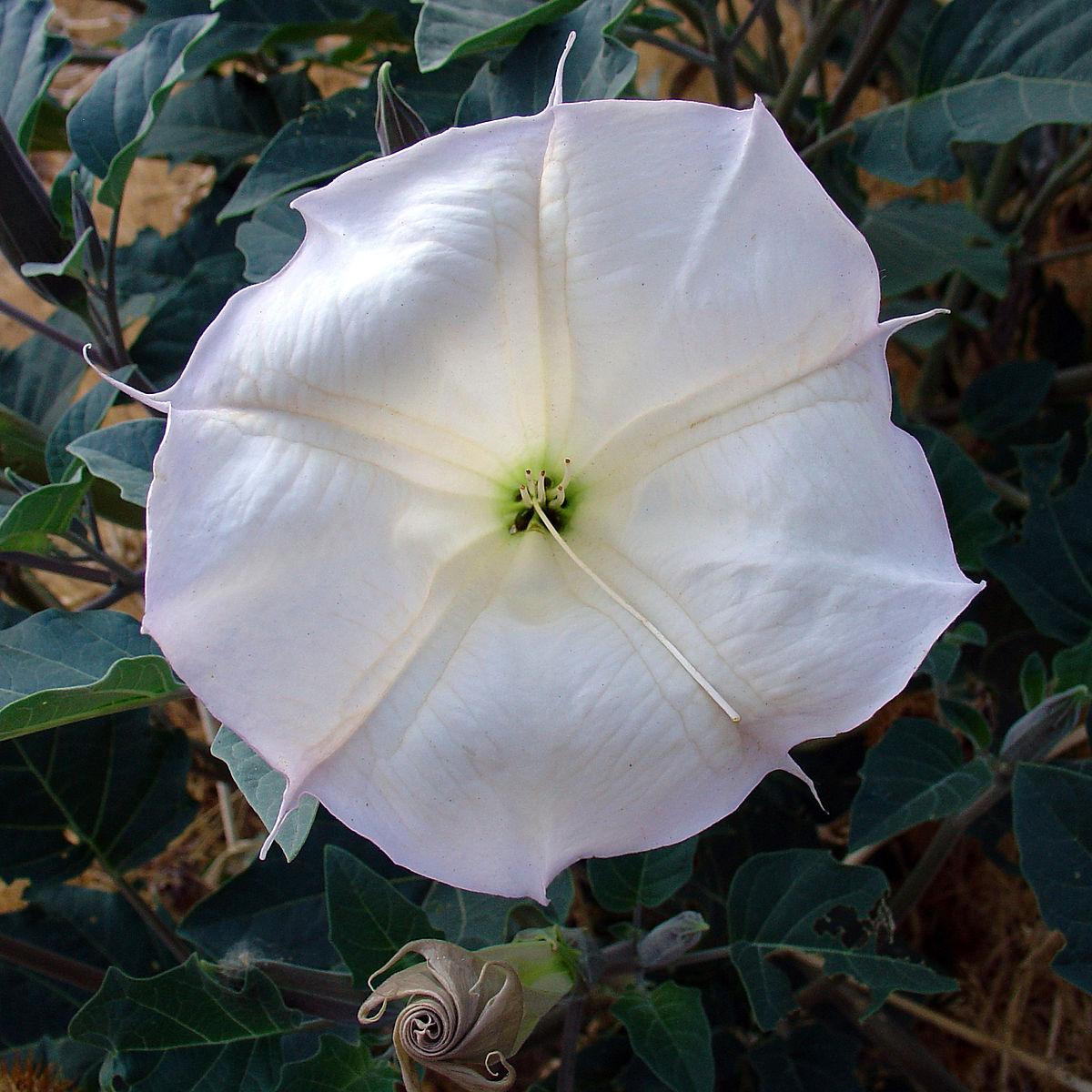
Datura Wrightii, also known as “sacred datura,” is a striking plant with large, trumpet-shaped flowers.
The blooms are usually white or pale lavender and emit a powerful fragrance at night.
Unlike Ipomoea species, Datura wrightii grows as a shrub and is often found in dry, desert climates.
- Bloom Color: White or pale lavender
- Best For: Dry, desert landscapes
- Unique Feature: Large, trumpet-shaped flowers that attract nocturnal pollinators
3. Ipomoea Leptophylla

Ipomoea Leptophylla, or “bush morning glory” or “sandhill moonflower,” is a drought-tolerant species native to the Great Plains of North America.
Unlike other Ipomoea species, it grows as a bush rather than a vine.
Its lavender-pink blooms open in the evening and are accompanied by narrow, silver-green leaves.
- Bloom Color: Lavender-pink
- Best For: Xeriscaping, drought-tolerant gardens
- Unique Feature: Grows as a bush and thrives in dry, sandy soils
4. Calonyction Aculeatum

Calonyction Aculeatum, often called the “giant moonflower,” is another popular variety of moonflower.
Its large, heart-shaped leaves and massive white blooms make it a showstopper in any garden.
This fast-growing vine is perfect for creating a dramatic effect on pergolas, walls, or trellises.
- Bloom Color: White
- Best For: Vertical gardening, fences, arbors
- Unique Feature: Massive blooms and rapid growth make it ideal for covering large spaces
5. Ipomoea Noctiflora

Ipomoea Noctiflora, known for its delicate white blooms, is similar to Ipomoea Alba but typically has smaller flowers.
This vine grows quickly and is often used to cover trellises or walls.
Its fragrant, nocturnal blooms are perfect for evening gardens.
- Bloom Color: White
- Best For: Trellises, pergolas, evening gardens
- Unique Feature: Smaller, fragrant blooms that open in the evening
6. Datura Metel
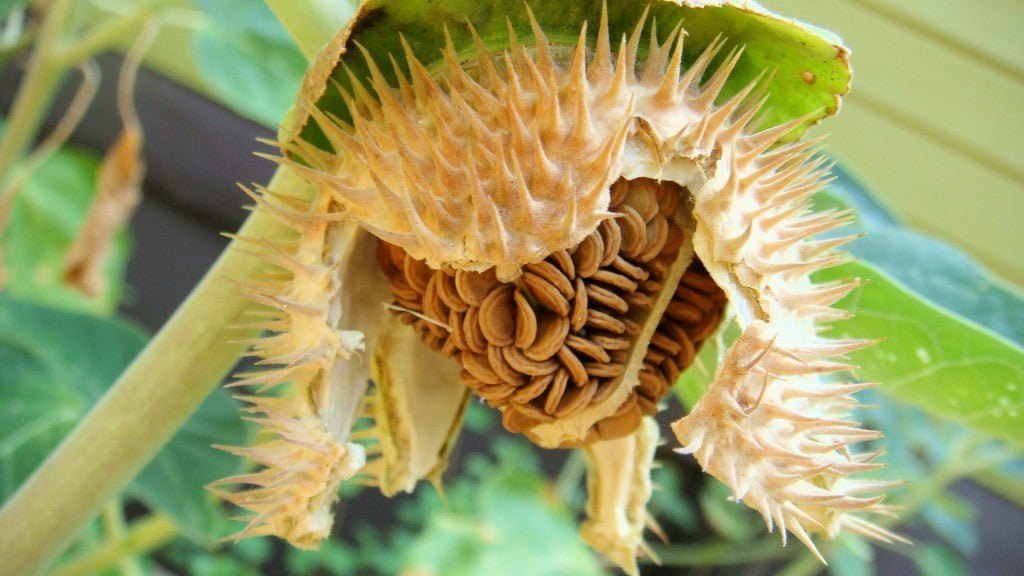
Datura Metel, commonly known as “devil’s trumpet,” is a dramatic moonflower species with large, trumpet-shaped blooms that open at night.
The flowers can be white, purple, or yellow, and the plant has a distinctive, bush-like growth habit.
Datura Metel is often used in ornamental gardens for its bold appearance and intoxicating fragrance.
- Bloom Color: White, purple, or yellow
- Best For: Ornamental gardens, containers
- Unique Feature: Bushy growth and highly fragrant, large, trumpet-shaped flowers
7. Ipomoea Purpurea
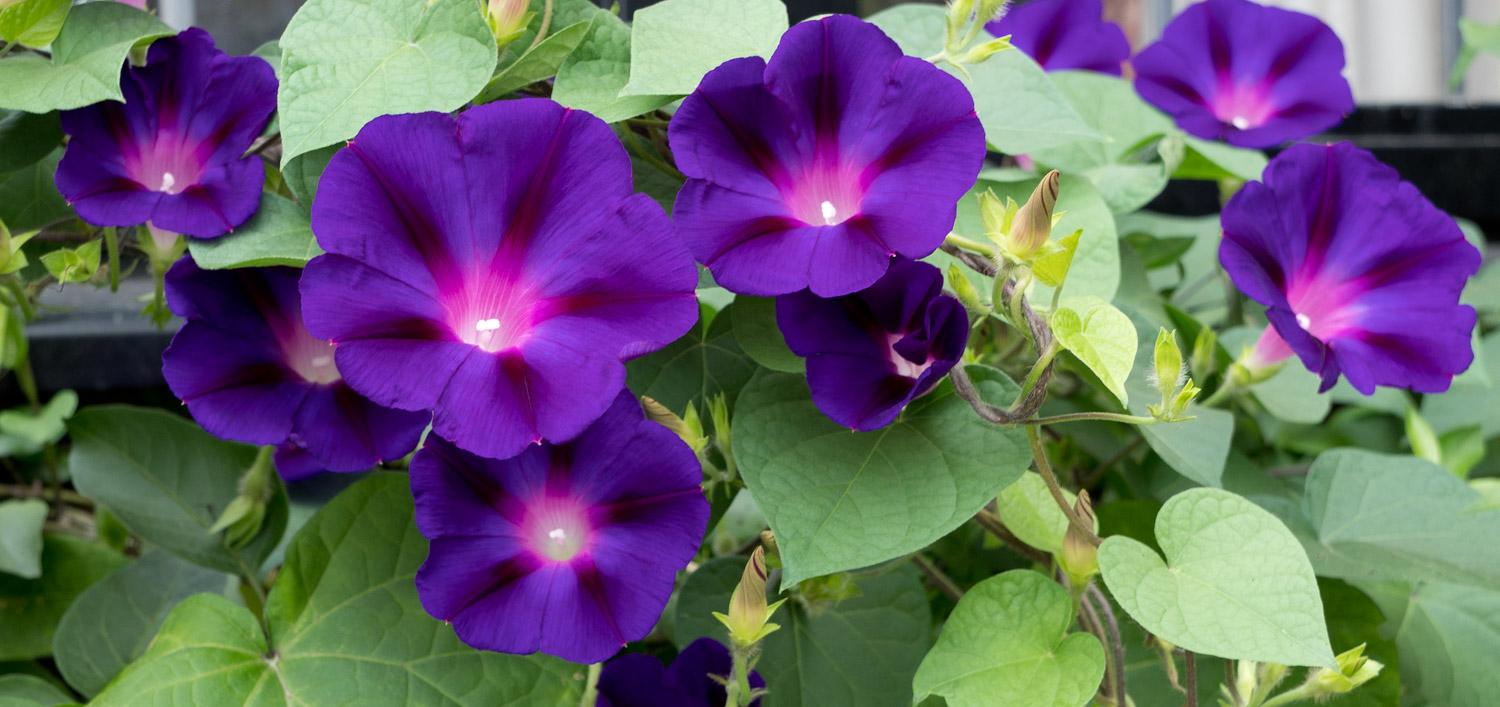
Ipomoea Purpurea, commonly known as “morning glory,” is a versatile moonflower that blooms day and night.
It produces vibrant, trumpet-shaped flowers in shades of blue, purple, pink, and white.
Though not exclusively a moonflower, some varieties of Ipomoea Purpurea open their blooms in the late evening, making them a good addition to moonlit gardens.
- Bloom Color: Blue, purple, pink, white
- Best For: Fences, arbors, trellises
- Unique Feature: Multi-colored blooms that can open in the late evening or early morning
8. Datura Inoxia

Datura Inoxia, also called “thorn apple” or “angel’s trumpet,” is known for its large, white, fragrant flowers that open at night and spiny seed pods.
This moonflower species grows as a shrub and is commonly found in warm, arid regions.
The plant has a striking appearance, with its broad, green leaves and impressive trumpet-like flowers.
- Bloom Color: White
- Best For: Dry, warm regions, ornamental gardens
- Unique Feature: Fragrant, trumpet-shaped blooms paired with unique spiny seed pods
9. Calonyction Tuberosa
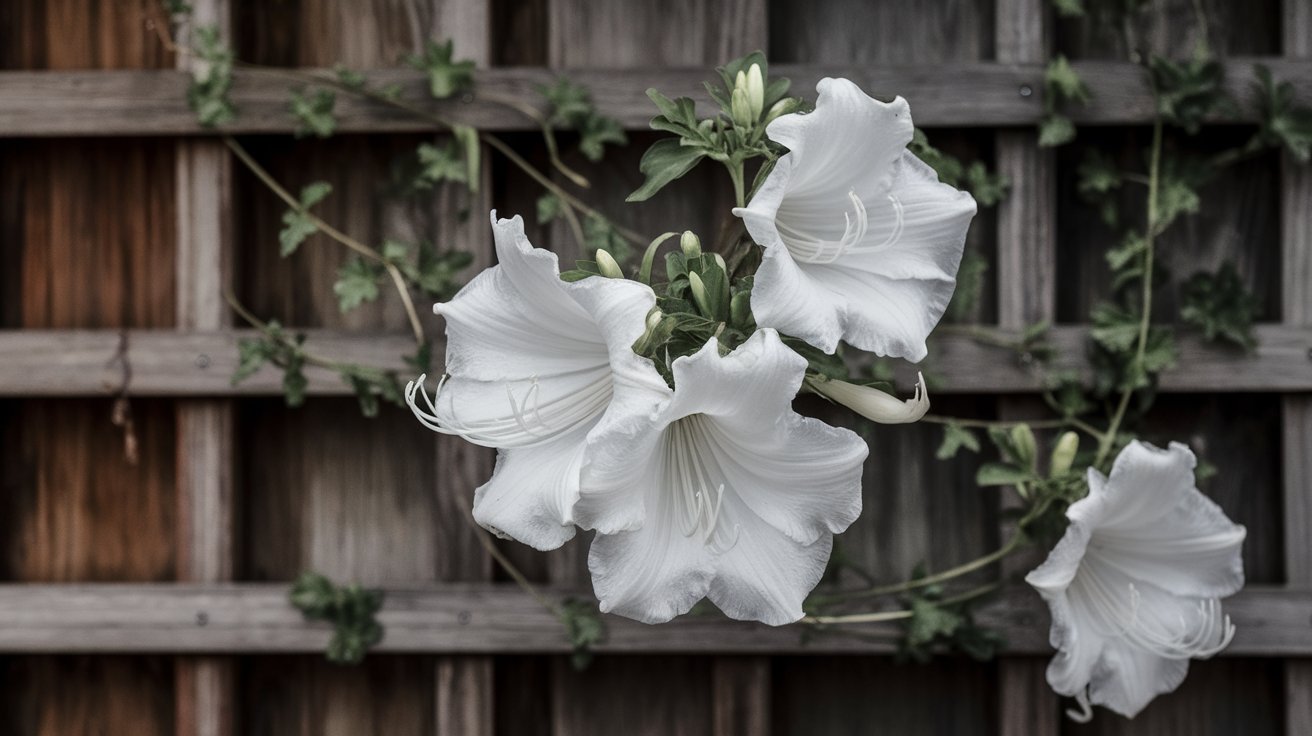
Calonyction Tuberosa, often called the “tuberous moonflower,” is a unique species known for its large, white flowers that bloom at night and its tuberous root system.
The flowers are highly fragrant and open late evening, attracting nocturnal pollinators.
This climbing vine is perfect for adding height and drama to garden structures.
- Bloom Color: White
- Best For: Climbing over arbors, trellises, pergolas
- Unique Feature: Tuberous root system and large, fragrant blooms that attract night pollinators
10. Ipomoea Macrorhiza
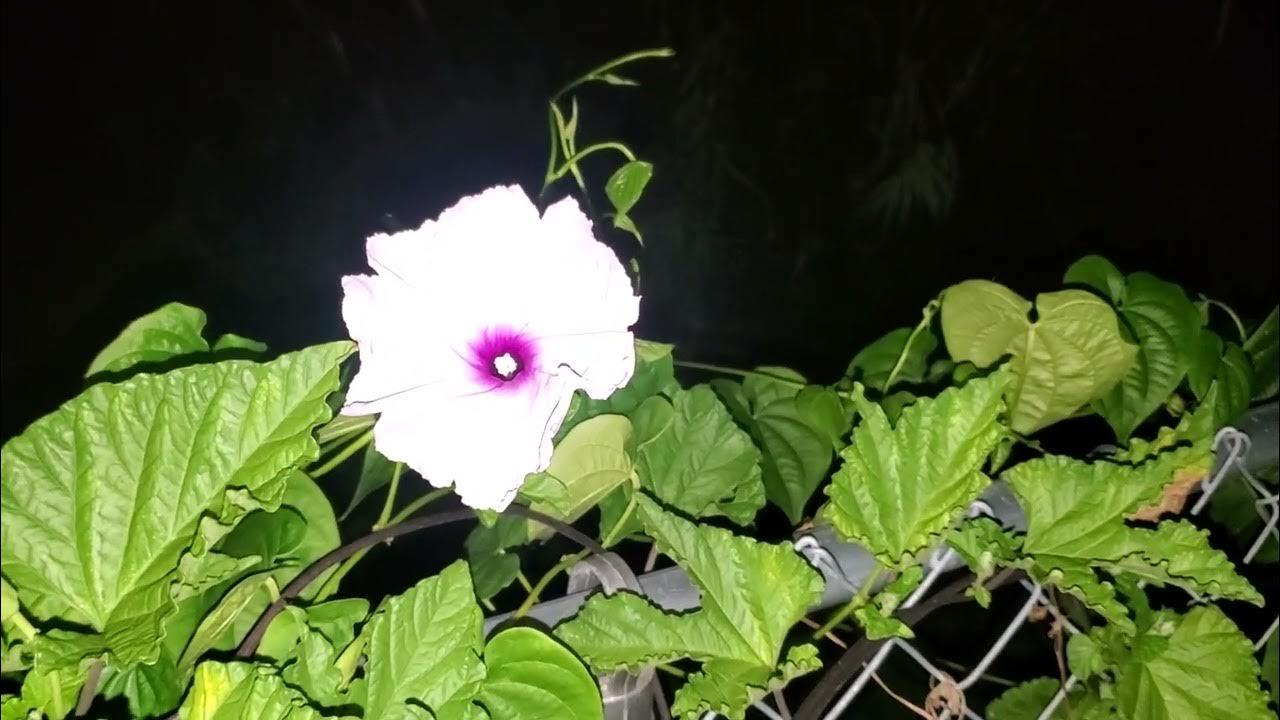
Ipomoea Macrorhiza, also known as “wild potato vine,” is a lesser-known species of moonflower that features heart-shaped leaves and large, white, or pale lavender blooms.
This vine is native to the southeastern United States and is well-suited for sandy soils and coastal environments.
- Bloom Color: White or pale lavender
- Best For: Coastal gardens, sandy soils, trellises
- Unique Feature: Thrives in sandy, coastal environments with heart-shaped leaves and large blooms
11. Ipomoea Batatas (Ornamental Varieties)
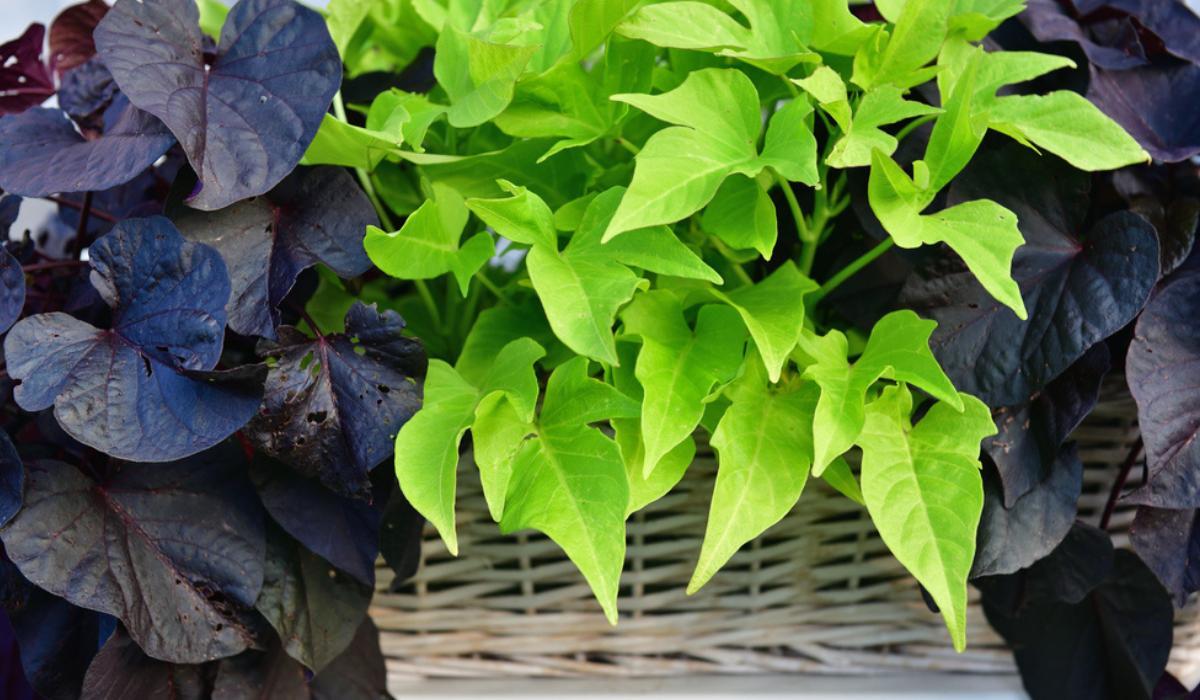
Ipomoea Batatas, commonly known as the “sweet potato vine,” is widely grown for its ornamental varieties, which feature vibrant foliage blooms.
Though primarily valued for their colorful leaves, some ornamental varieties of Ipomoea
Batatas produce small, white, or pale purple moonflower-like blooms that open in the evening. These vines are perfect for adding color to your moonlit garden.
- Bloom Color: White or pale purple
- Best For: Ornamental landscaping, containers, hanging baskets
- Unique Feature: Known for its vibrant foliage, with some varieties also producing small evening blooms
12. Ipomoea Violacea

Ipomoea Violacea, often called “beach moonflower,” is a vining species that produces white to lavender blooms that open primarily at night.
This plant is native to coastal regions and is well adapted to sandy soils.
Its large, fragrant flowers are ideal for attracting moths and other night pollinators.
- Bloom Color: White to lavender
- Best For: Coastal gardens, sandy soils
- Unique Feature: Thrives in coastal areas and produces night-blooming flowers with a pleasant fragrance
13. Ipomoea Cairica
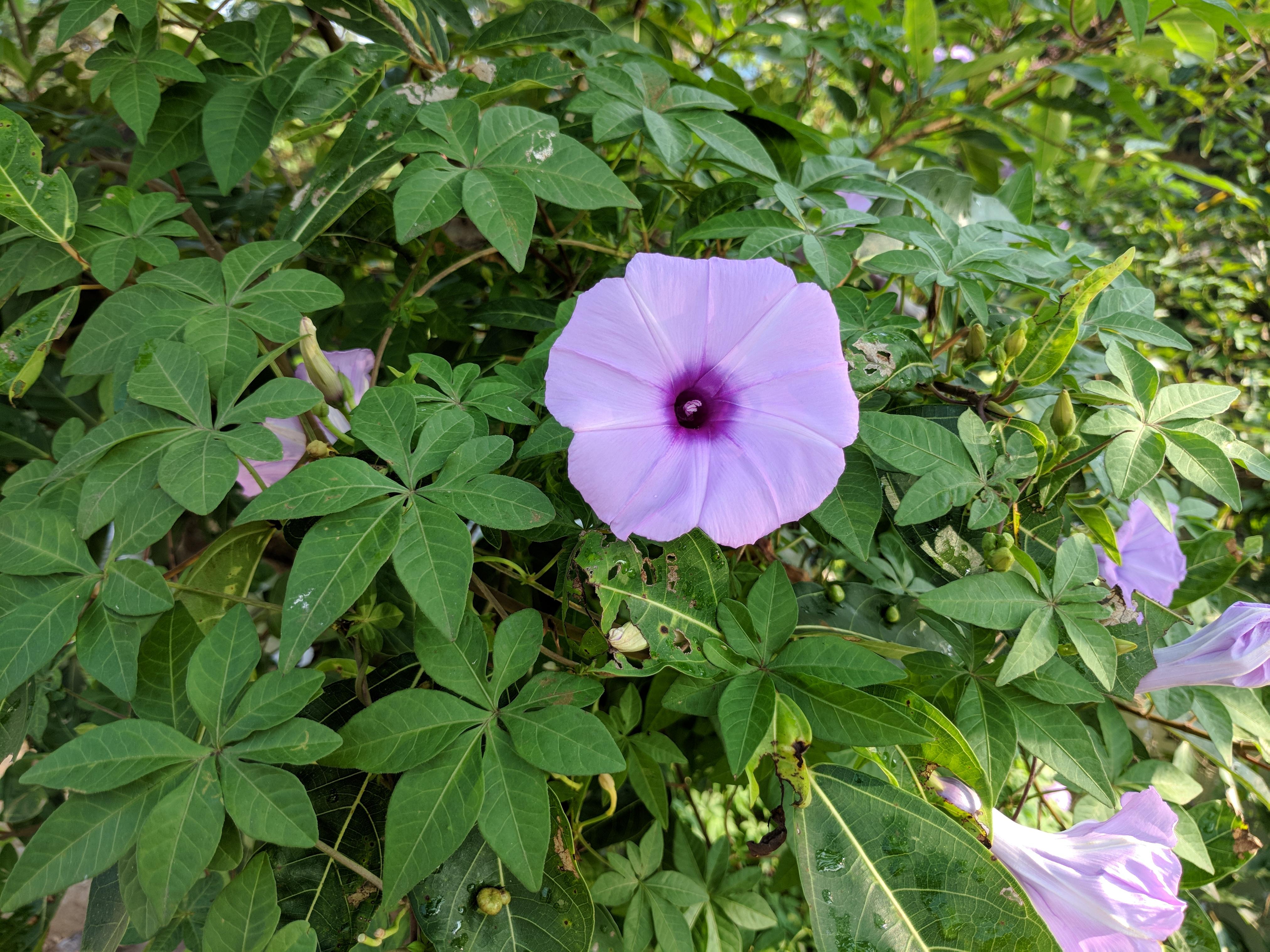
Ipomoea Cairica, also known as “mile-a-minute vine” or “coast morning glory,” is a fast-growing vine that produces small, lavender blooms.
While it blooms throughout the day, its evening flowers have a delicate fragrance, making it a beautiful addition to any moon garden.
This vine is known for its rapid growth and ability to cover large areas quickly.
- Bloom Color: Lavender
- Best For: Fast-growing ground cover, climbing over structures
- Unique Feature: Extremely fast-growing vine with fragrant blooms that open in the evening
14. Datura Stramonium
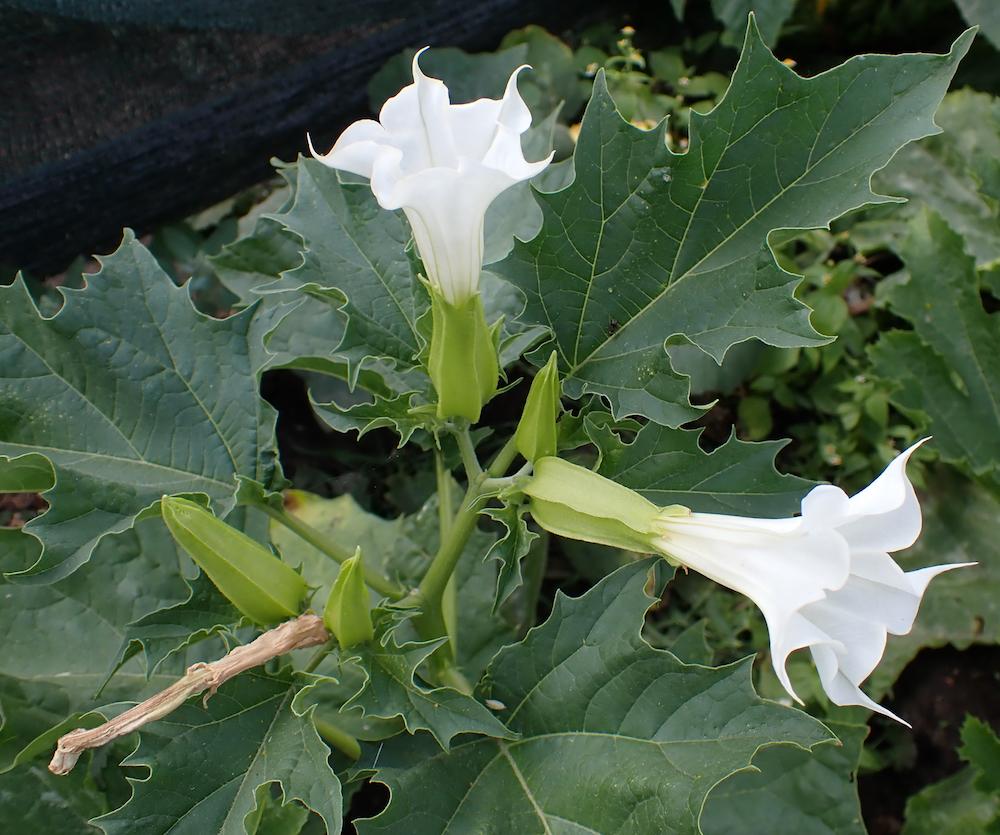
Datura Stramonium, commonly called “jimsonweed,” is a striking moonflower species with large, white, or purple trumpet-shaped blooms and spiny seed pods.
Like other Datura species, it opens its blooms at night, releasing a strong fragrance that attracts night pollinators.
This plant is highly toxic and should be handled with care.
- Bloom Color: White or purple
- Best For: Ornamental gardens, desert landscapes
- Unique Feature: Toxic plant with impressive blooms and spiny seed pods
15. Calonyction Speciosa
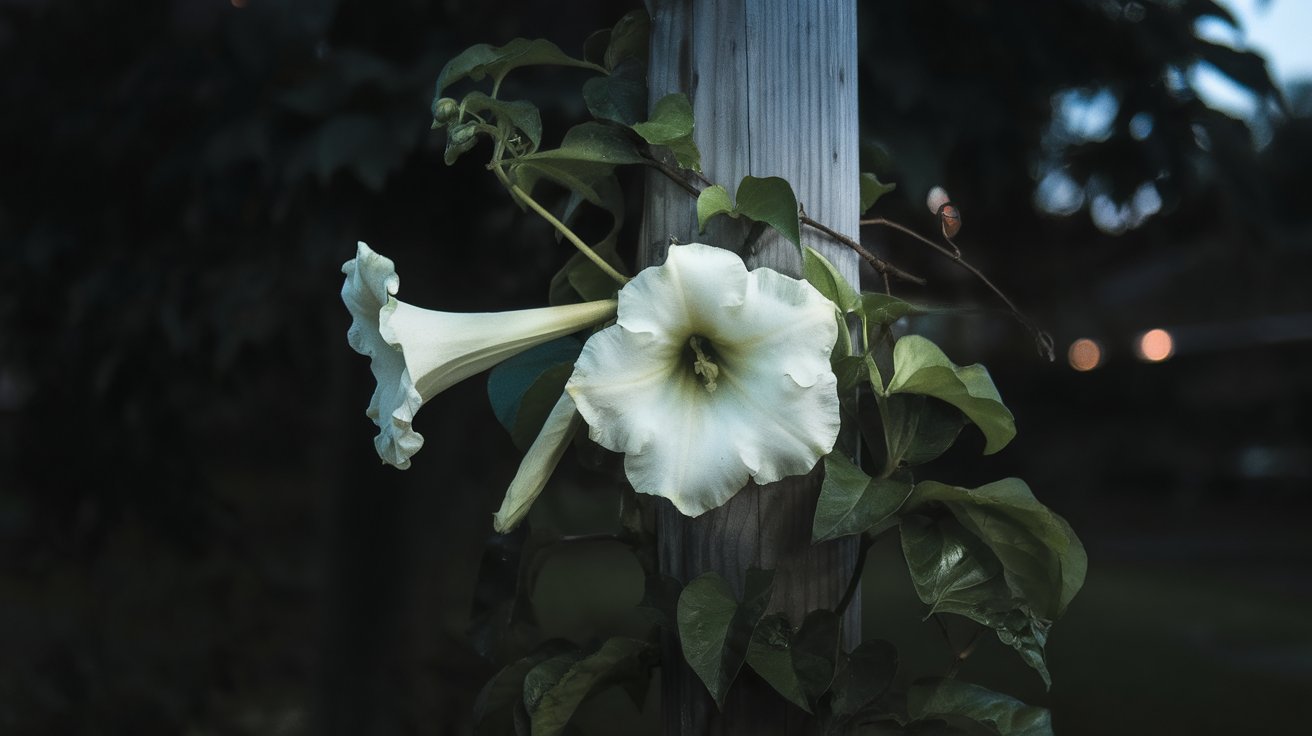
Calonyction Speciosa is a variety of moonflower vine known for its large, white, nocturnal blooms that open in the evening and stay open until sunrise.
This fast-growing vine is perfect for covering fences, arbors, or pergolas, and its blooms fill the night air with a lovely fragrance.
Due to its similar appearance, it is often confused with other moonflower species.
- Bloom Color: White
- Best For: Vertical gardening, covering structures like arbors or pergolas
- Unique Feature: Large, fragrant flowers that attract nocturnal pollinators
Conclusion
Moonflowers are a magical addition to any garden, offering stunning, fragrant blooms that come to life under the moonlight.
From the well-known Ipomoea Alba to the lesser-known Calonyction Speciosa, each species brings its unique charm and beauty.
Whether you’re looking for fast-growing vines or striking, shrub-like varieties, these 15 types of moonflowers offer plenty of options.
Add them to your garden to create a breathtaking nighttime display and attract nocturnal pollinators.
